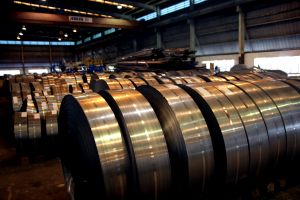Last week Innovation Minister Kim Carr addressed the senate and announced that it was time to re-tool our industries, to re-skill our people, and to build a new economy on a new type of manufacturing.
He said while the resources boom had been of great net benefit to Australia, the resulting 45 per cent movement in the exchange rate had hurt many manufacturing businesses.
"Many manufacturers are unaffected by the higher exchange rate, or benefit from cheaper imports," Carr said.
"However, many businesses have found the higher exchange rate extremely difficult to handle. The rate of change has been so rapid that they have simply not had time to adjust their business models.
"This has been a particular problem for manufacturing."
Carr said the only way forward was for the government to deal with distressed companies as best it could, while transforming the economy through science and innovation.
At the same time he was quick to drive home the point that the government was already being proactive.
"We are modernising the telecommunications system. We are rebuilding rail and port infrastructure. We are investing heavily in training and skills. We are strengthening and upholding anti-dumping protections. We are using the taxation system to stimulate business investment. We are leading the nation's transition to a clean energy future," Carr told the senate.
"As my Department's 2011 Innovation System Report makes clear, innovation-active businesses are much more likely to raise productivity and profitability, offer new products and services and increase employment."
Carr said lessons could be learned by looking overseas, to China and beyond for answers.
"The Chinese, for example, have made it clear that taking growth to the next level will require major investments in science and research. And this is happening. China's expenditure on R&D has multiplied by a factor of six in the space of a decade," he said.
"In 1998 Gross Domestic Expenditure on R&D in China was $15.8 billion, or 0.65% of GDP. In 2008 it was $120.6 billion, or 1.54% of GDP. China has now committed to reach the 2.5% threshold by 2020.
"There is a clear role for governments in all of this. R&D incentives to business need to be properly structured, while the funding provided to public research institutions needs to be ambitious with sensible priorities.
"And we need to ensure that publicly funded research delivers an appropriate dividend."
But Carr then admitted: "none of this is easy."
He said the government was now spending $9.4 billion on R&D and innovation, but that ultimately the future of manufacturing in Australia had to be a team effort.
"We are here to back firms who are prepared to back themselves," he said.
Senator Carr pointed to the government's new R&D Tax Credit and its Enterprise Connect and Commercialisation Australia programs as examples of how government was not standing by while manufacturing floundered.
It’s an opinion that not everyone in manufacturing shares. Heather Ridout, Chief Executive of the Australian Industry Group, also speaking this week said the example of Bluescope Steel announcing extensive restructuring was not just bad news for those directly affected, but was: "chilling news…for all those involved in manufacturing in Australia."
"Ai Group has been warning for some time that the resources boom has not been going to plan and despite the predictions of optimists, is not delivering the promised growth and related opportunities," Ridout said.
"Manufacturing as a whole is enduring many of the same pressures as BlueScope - weak demand fuelled by global uncertainties and rising interest rates; rising labour costs which are not backed by productivity gains; rising electricity and other input costs; and a high dollar which has pulled the ground out from below our export and import competitiveness."
Ridout said to address this required a comprehensive response which looked after the short-term fallout of restructuring, built for medium-term competitiveness, and ultimately delivered a long term strategy.
"The immediate needs of businesses and employees must be addressed through responsive and generous structural adjustment support," Ridout said.
"We need a strategy to deal with the stifling impacts of the minerals boom on manufacturing as a whole which is bearing the brunt of the high Australian dollar.
"Australia needs a strategy to drive whole-of-economy productivity gains.
"With more than 1,400 direct jobs lost in the steel industry in the past week alone and some 20,000 lost in this big-employing manufacturing sector since February, we have reached a crucial point which demands, government action in coordination with industry to ensure the sector is given the sustained support necessary to emerge through the current structural pressures and to prosper beyond the boom."






